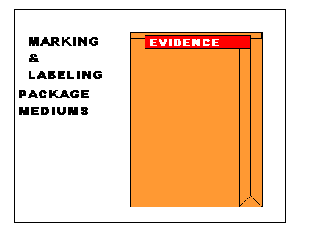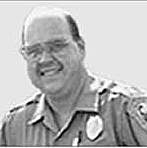Proper Tagging and Labeling of Evidence for Later Identification
Mike Byrd
Miami-Dade Police Department
Crime Scene Investigations
See also the instructional videos on "Evidence Collection"
What is the purpose of tagging and labeling items of evidence?
The primary purpose for the crime scene investigator or evidence recovery technician, in tagging and marking items of evidence is so that he/she will be able to easily identify those items at a later date. The tagging, labeling and marking of the evidence adds credibility and control to our ability to identifying the item.
What is the chain of custody?
The important chain of custody for the evidence at a crime scene usually starts with the collection done by the investigator-technician. The marking and labeling begins our control and custody of the items of evidence. The chain of custody is defined as the witnessed, written record of all of the individuals who maintained unbroken control over the items of evidence. It establishes the proof that the items of evidence collected at the crime scene is the same evidence that is being presented in a court of law.
What does the chain of custody establish?
- who had contact with the evidence
- the date and time the evidence was handled
- the circumstances for the evidence being handled
- what changes, if any, were made in the evidence

What information belongs on the tag?
All evidence collected at the crime scene should be tagged. If the item cannot be tagged then it should be labeled or marked. Consistency should always be adhered to in the information that is used for marking and labeling the evidence.
- description of item
- police case number or identifier
- date
- location of collection
- collectors name and identifier
- brand name
- any serial number or garment information

What about the information marking the outside of the evidence package?
Similar information should be labeled are marked on the outside of the packaging mediums.
- type of case
- date
- location of collection
- item description
- police case number or identifier
- serial number or garment identifier
- collector's name and identifier information
- where item is being routed to for analysis
You will be amazed at how easy and organized these tips will be for your identification of the evidence when it is presented in a court of law.
About the Author

Mike Byrd (1955-2005) joined the Miami-Dade County Police Department in 1983 and started with the Crime Scene Investigations Bureau in 1987. He took an exceptionally active part in the science of forensic crime scene investigations, including development of new techniques, publishing methodology of crime scene procedures, and teaching. Mike developed new techniques for gathering and cataloging crime scene evidence including the lifting of fingerprints, vehicle tire impressions, and footwear impressions.
Mike's methods and analysis withstood the scrutiny of the criminal justice process. He published more than thirty crime scene articles on crime scene evidence collection and for the International Association for Identification and was awarded The Good of the Association Award in 2002 for his innovative identification methodology and techniques. He taught crime scene investigation procedures and techniques at police departments around the country and took great pride at instructing smaller Florida police departments in the latest techniques in evidence gathering.
Mike performed the tough detailed oriented forensic work at many major crime scenes and disasters over two-decades. He gathered, processed, and identified the DNA evidence used to convict the Tamiami Strangler for a string of heinous murders in 1994. His thoughtful gathering of evidence at the Valujet crash allowed families to reach closure for the deaths of loved ones.
Mike Byrd died after a more than two year battle with multiple myeloma cancer. Annually, the Police Officer Assistance Trust awards the Mike Byrd Crime Scene Investigation Scholarship in his honor.
Articles by Mike Byrd
- Applied Basic Concepts...WHAT IT TAKES
- Crash
- Developing and Lifting Latent Footwear Impressions
- Disaster Management
- DNA, The Next Generation Technology is Here!
- Duty Description for the Crime Scene Investigator
- Fragile (Sensitive) Fingerprint Recovery from Mylar Surface
- Hazards and a Crime Scene
- If It's There, We'll Find It!
- Innovative Evidence Identification Markers at a Crime Scene
- Other Impression Evidence
- Packaging Firearms
- Proper Tagging and Labeling of Evidence for Later Identification
- Reaching Beyond the Norm
- Ridge Detail at a Crime Scene
- Simple EZ Sketching
- Simple Tire Standards Collection
- The Corpse as a Scene
- Written Documentation at a Crime Scene

